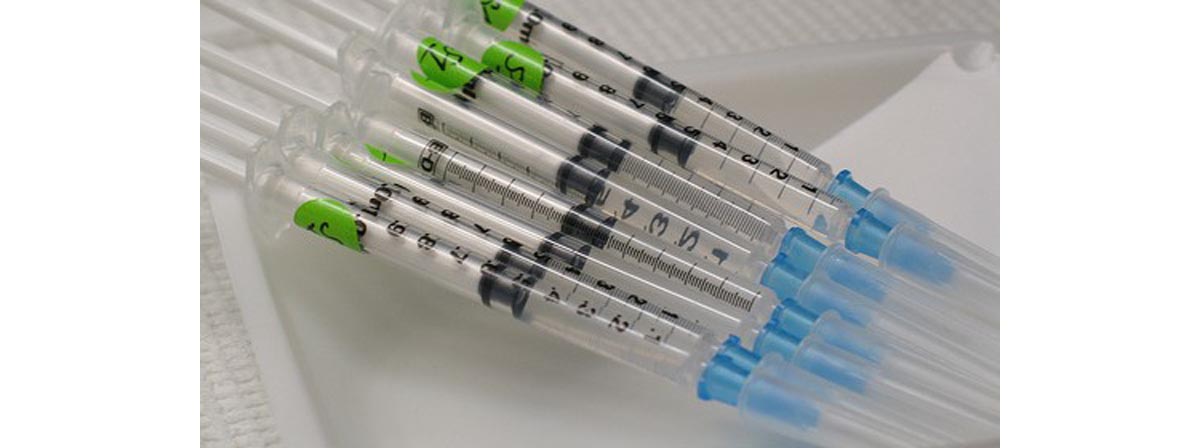Table of Contents
Studies show that hyaluronic acid injections are relatively safe to use. Though pain may be felt or joint fluid buildup may be seen at the injection site, these are only temporary side-effects. On some rare occasions, the joint may swell more after injection. Close follow-up is advised to detect any negative effects and subsequent need to stop the treatment.

Frequency of Side Effects
Treatment is not free from side effects. The most common complications include difficulty in moving around, stiffness/pain around the muscles and joints while less common ones may include redness and flare-ups in the joints. Numbness, bleeding and discoloration around the injection in the site may also be felt and seen. The incidence of these side effects ranges from 1 to 4 percent only.
Some researchers consider viscosupplementation useless
Although viscosupplementation is considered relatively safe and is approved by many countries as a treatment for knee osteoarthritis, the efficacy of this method remains questionable. Two recent analyses of existing data performed in 2012 and 2013 arrived to the different conclusions.
One analysis compared the results of more than seventy published trials. The authors concluded that in the period of 5 to 13 weeks after the injections, 28 to 54 % of the patients experienced lesser pain while 9 to 32 % of them experienced improvement of function. Generally, hyaluronic acid injections have been found more effective than pain killers such as non-steroidal anti-inflammatory drugs (NSAIDs) and corticosteroids.
Another analysis, however, arrived to a different conclusion. Researchers analyzed 89 relevant trials performed between1960 and 2012 and involving a total of 12,667 adult patients. Of these trials, 71 showed some moderate positive results in terms of decreasing pain intensity and function improvement. Fourteen trials, however, point to the significant risk of serious adverse effects. The quality of data in most trials was poor, and the safety data were rarely reported. Researchers concluded that viscosupplementation is associated only with small and clinically irrelevant benefits that don’t outweigh the potential risks.
The situation with proper assessment of the method is complicated by the fact that various preparations of hyaluronic acid are commercially available, and the exact condition of the knees can vary significantly from one patient to another. Hence, individual patient profiling needs to be considered, and conclusions derived from trials should not be generalized.
Other Available Alternatives
Other alternative treatments of knee osteoarthritis include conservative as well as invasive measures. They can be used in addition to or instead of hyaluronic acids injections.
Exercise and keeping an ideal weight help joint health and alleviate the stress caused by weight-bearing activities. Heat and cold compress packs help to improve circulation around the joints and reduce swelling. This eventually alleviates pain and stiffness.
A number of alternative therapies such as acupuncture seem to be effective in reducing the arthritis associated pain. Supplementation with glucosamine and chondroitin sulfate has also gained recognition in helping patients to remedy their osteoarthritis symptoms.
- Bellamy N, Campbell J et al. (2006) Viscosupplementation for the treatment of osteoarthritis of the knee. Cochrane Database Syst Rev. 2006 (2), CD005321
- Ostałowska AB, Nowak D et al. (2013) Assessment of knee function and biochemical parameters of articular fluid and peripheral blood in gonarthrosis patients following intra-articular administration of hyaluronic acid. Pol Orthop Traumatol. 78, 173-81
- Miller LE, Block JE (2013) US-Approved Intra-Articular Hyaluronic Acid Injections are Safe and Effective in Patients with Knee Osteoarthritis: Systematic Review and Meta-Analysis of Randomized, Saline-Controlled Trials. Clin Med Insights Arthritis Musculoskelet Disord. 6, 57-63
- Rutjes, AW, Jüni, P, da Costa, BR, Trelle, S, Nüesch, E, Reichenbach, S (2012) Viscosupplementation for osteoarthritis of the knee: a systematic review and meta-analysis. Annals of internal medicine 157 (3): 180–91.
- Photo courtesy of Harrygouvasx by Wikimedia Commons : commons.wikimedia.org/wiki/File:Sodium_Hyaluronate_in_the_Knee.JPG
- Photo courtesy of Nathan Forget by Flickr : www.flickr.com/photos/nathanf/2196764544/

